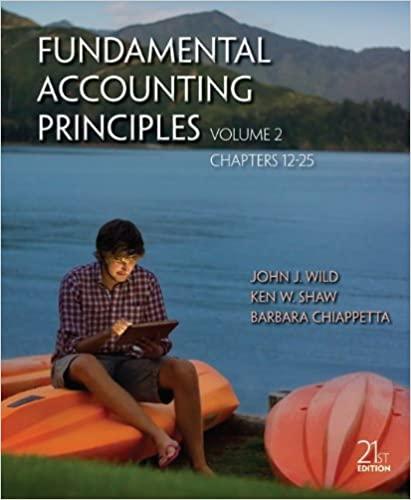Billy's Beats Inc. Billy's Beats Inc. (Billy's), an SEC registrant, is a new audit client with a fiscal year-end of December 31, 2017. Billy's manufactures musical instruments Billy's acquired Little Drummer Boy Inc. (Little Drummer) in 2012 for $575 million in cash. The fair value of significant assets acquired was determined by an external valuation specialist and included property, plant, and equipment totaling $865 million (which is based on an appraisal of the market prices of similar assets) and other assets totaling $145 million. The useful lives assigned to the property, plant, and equipment acquired were 30 years for the plant and 15 years for the equipment. The useful lives for the plant and equipment already owned by Billy's are 20 years and 10 years, respectively. Acquired customer lists, included in other assets, were assigned a useful life of 15 years. To test the useful lives of property, plant, and equipment, the engagement team asked management why the useful lives assigned to the plant and equipment acquired differed from the useful lives assigned to that which Billy's had already owned Management stated that the useful lives for the acquired assets were the useful lives used by Little Drummer before the acquisition. The engagement team discussed the useful lives of the acquired property, plant, and equipment with the plant manager of Little Drummer. The plant manager stated that 30 years and 15 years for the plant and the equipment, respectively, were the useful lives used before the acquisition. This discussion was documented in the audit working papers. The valuation specialist allocated the property, plant, and equipment fair value of $865 million to each asset class on the basis of the percentage of the seller's total original cost applicable to each asset class. These percentages were provided by management of Little Drummer and relied on by the valuation specialist. The engagement team compared the percentage of total costs to a client-prepared spreadsheet listing each asset class, asset ID. and percentage of total cost. No errors were noted and, accordingly, no further testing of the client-prepared spreadsheet was performed by the engagement team. In addition to its drum manufacturing business, Billy's also wholly owns RockOut Inc. (RockOut), which is the largest manufacturer of guitars in the United States. RockOut grew through the acquisition of other guitar companies and completed five, eight, and four acquisitions during 2012, 2017 and 201X, respectively. As a result of the acquisitions, RockOut reported approximately $90 million (15 percent of total assets and 60 percent of total intangible assets) of customer lists as of December 31, 2017. Rockout amortizes its customer lists on a straight-line basis over 25 years, which management believes reflects the pattern in which the economic benefits of the customer lists are used up. During 2017, management revised its estimate of the customer list economic life, and began assigning an amortization period of 15 years to newly acquired customer lists. Amortization expense for the year ended December 31, 2012, was $3 million. To test the economie lives of the customer lists, the engagement team asked management what the reasoning was for the change in the assumed economic life for the newly 3 acquired customer lists in current year. Management provided a memorandum that discussed the rationale for using the 25-year economic life to amortize the various customer lists, as well as the rationale for the current-year change in management's estimate of the newly acquired customer lists lives. This memo was included in the audit working papers, but the working papers did not include any additional documentation from the engagement team. Required: For both Little Drummer and RockOut, determine whether the engagement team performed adequate and appropriate audit procedures to address the risks of material misstatement associated with management's assumptions related to the useful lives assigned to the acquired assets and the allocation of fair value to the acquired assets (see the specific risks of material misstatement below). For purposes of this example, the risks of material misstatement have been assessed as normal risks (i.e., not significant risks). (Note that your focus should be on the substantive audit procedures performed, not the accounting treatment or the control testing.) If the engagement team did not perform adequate and appropriate procedures, describe what additional procedures you would have performed Risks of material misstatement: The useful lives assigned to property, plant, and equipment are not appropriate. The economic lives assigned to customer lists are not appropriate. The method used to allocate fair value to the acquired assets is not appropriate. The determination of fair value is based on unsupportable assumptions made by management A. Explain the issue as you see it and what challenges there are in addressing the matter in this specific instance and more broadly. B. Ultimately you must decide on how you want to treat the issue and support your decision with relevant research and citations which you feel support your argument. C. link directly to any accounting standards or sources of information you use in your analysis. 3 1 C









